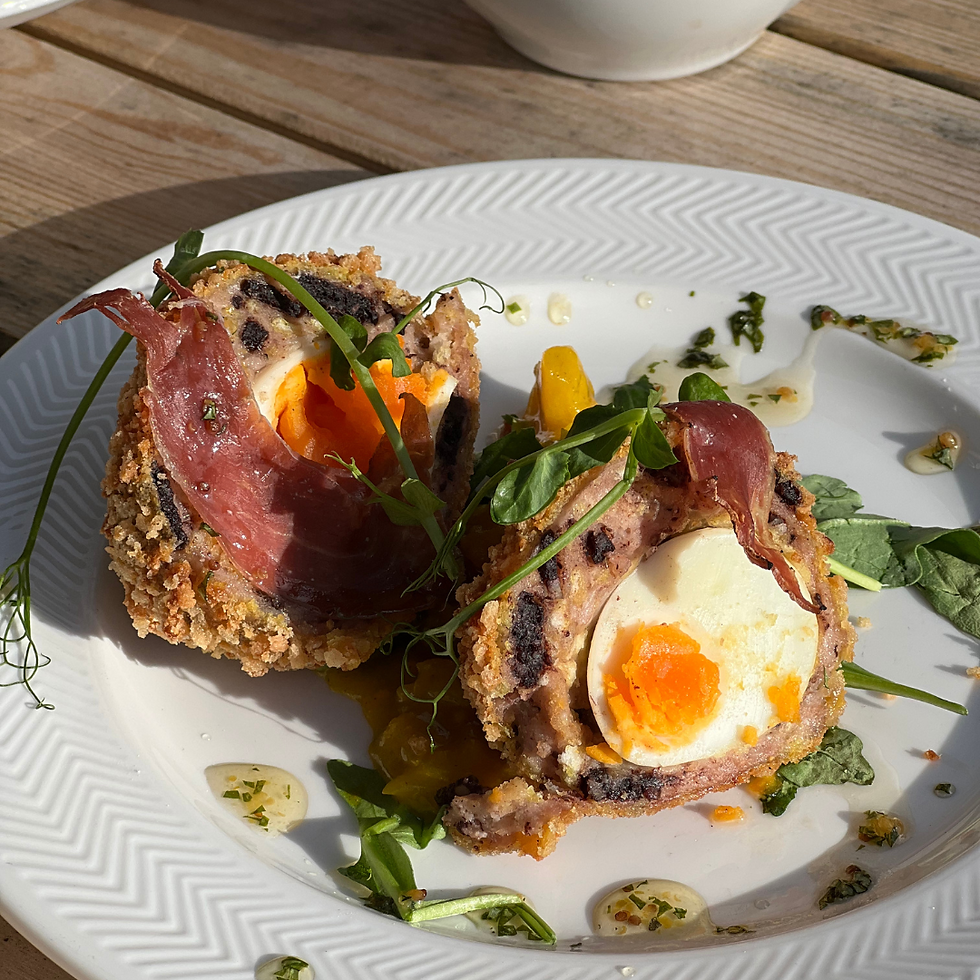OUR HOW TO GUIDE TO COMPOSTING
- Bodnant Welsh Food

- Mar 7, 2022
- 2 min read
Composting your food waste is a great way to reduce your impact on the environment whilst also improving the health of your soil!
Types of Compost Bins
There are loads of different types of compost bins but we like to build our own, so for the purpose of this guide we will be showing you how to make your own compost bin, to perfectly suit your garden whatever size.
To make your own bin, start by hammering four 10cm x 10cm (4in x 4in) posts to enclose an area about 1sq m (40sq in.) Then bash the soil with the back of a spade to consolidate it. Next tack wire netting to the posts, or nail planks around them, leaving the front side easily detachable so you can get the finished compost out.
Making compost
1. Spring is the perfect time to start your composting journey! For the best results you need a combined mixture of soft, green, nitrogen-rich material and dry, brown, carbon-rich material in roughly even quantities. The main rule is not to let one material dominate the heap. If you roughly stick to the 50/50 rule your composting journey will be smooth sailing.
2. Place the more woody material at the bottom to help with air circulation and layers of different materials at least 30cm deep. Shred larger items so they decompose more easily.
Top Tip: if the waste is very dry, spray with water to moisten the pile, but never soak it.
3. Keep adding to this initial pile at regular intervals. When the heap or bin is full, it will start to heat up as the decomposition process gets underway. After a couple of weeks when it begins to cool down, turn the heap with a fork, mixing up the contents thoroughly and adding water if it is drying out. If turned regularly and in warm conditions your compost will be ready in about 2-4 months.
4. If you want a fast turnaround, create a hot compost heap by adding nitrogen, moisture and turning the heap regularly to improve the air circulation. When the heap begins to cool down slightly, turn the heap to introduce oxygen and undecomposed material into the centre and regenerate heating. The composting process is complete when mixing no longer produces heat in the pile
What to compost
Green, nitrogen rich material
grass cuttings
soft prunings
annual plant and weed remains before they have set seed
fruit and vegetable scraps
old cut flowers
tea bags and coffee grounds
Brown, carbon-rich material
cardboard (torn up)
newspaper
paper bags and scrunched up paper
straw
What not to compost
diseased plants
meat and fish
dairy
cooked food
coal ash
cat and dog litter
disposable nappies
perennial weeds eg bindweed
Top Tips
Just Add water
Cut or shred ingredients
Turn your pile often
A cold compost isn't always a bad compost
Try composting more unique things








